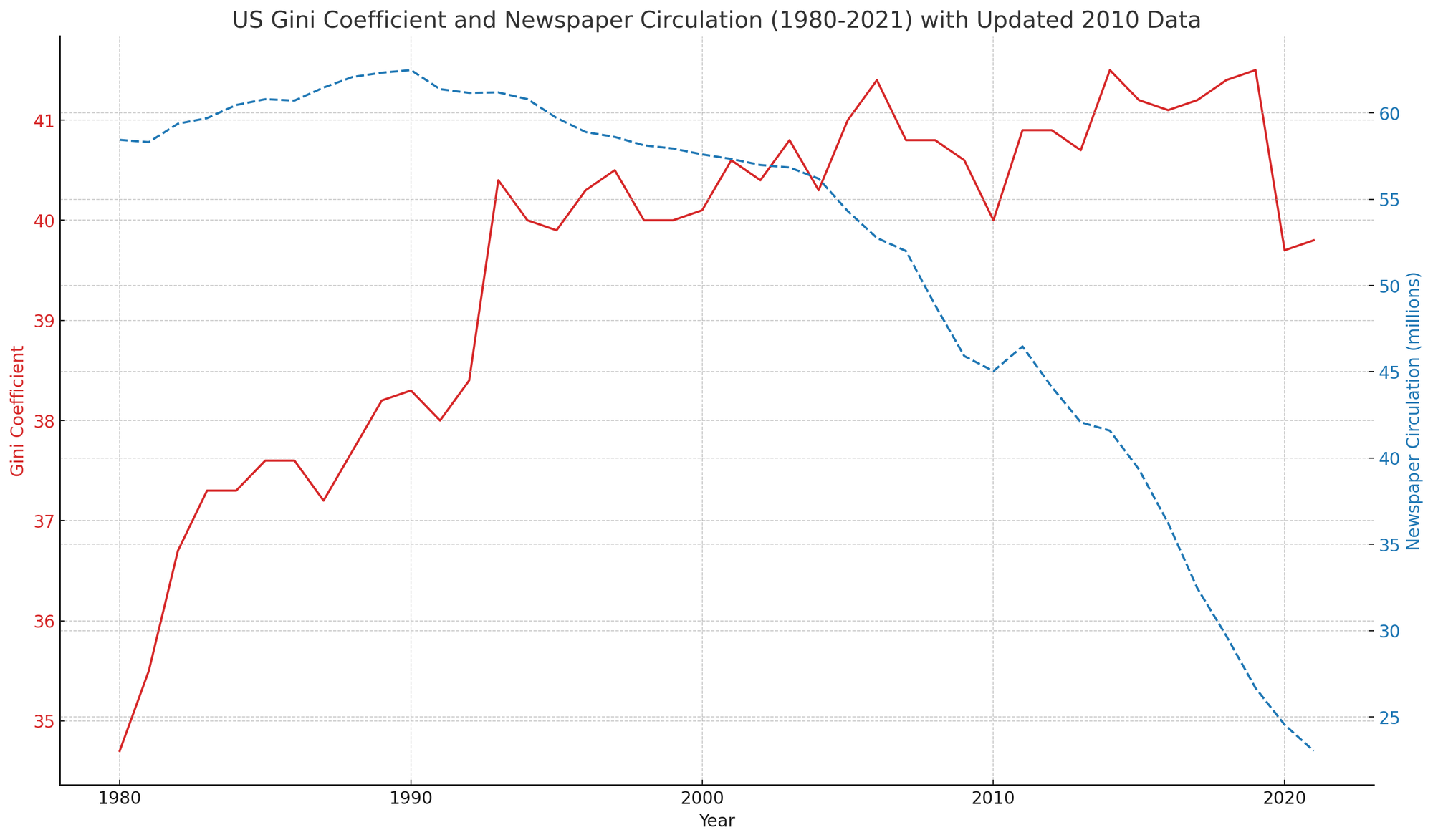The inevitable failure of America's crusade against global disinformation
date
Feb 29, 2024
slug
2024-the-inevitable-failure-of-americas-crusade-against-global-disinformation
status
Published
tags
disinformation
inequality
media credibility
fox news
type
Post
summary
Virtuous coalitions to counter disinformation will not work while inequality, the real cause of the issue, is not challenged.

In an effort to maintain its global leadership role - and with an election that Donald Trump is set to win - the US is spearheading the creation of a global coalition of democracies to combat disinformation. Despite the noble cause and clear goal, this initiative is likely to fail. Even if they expose thousands of campaigns and their masterminds, the initiative is doomed to failure. The people most in need of a reality check will not be listening - and that’s where the problem lies.
We are nearing a decade since the term "disinformation" became the bread and butter of journalism. Despite control of information and media manipulation existing for centuries (and more formalized about a hundred years ago), it was during Donald Trump's electoral campaign and the Brexit referendum that the world understood that the news as we had known it was altered forever. The whole dynamics of information had changed and the mechanics of the status quo of the journalism industry were no longer functional.
Because of systemic failures of the social media networks and the way digital advertisement works, initially, the world decided to lay the blame on the new tech moguls and their craving for money at all costs. It’s true, Meta and Google really created the perfect tools for disinformation and they are there open for hire, but the problem goes much deeper. Trump and Brexit have not been chosen the winners of their campaigns because they offer better proposals, but because they offer one that rips off reality as it is, a reality that has been increasing for most of the population in almost every country for decades. Take a look at this chart:

The blue dotted line represents the daily circulation of newspapers in the US, a reasonable indicator of the general audience's attention to the media. The red line represents the Gini coefficient, an indicator of societal inequality, or how fairly the GDP is distributed within a given society (in this case, the US). There is no direct correlation between these numbers, but it's fair to say that the media's importance in the average citizen's life has been declining long before Donald Trump accused the New York Times of being "fake news". Simultaneously, the middle class, especially the older and non-urban portion, has seen a steady decline not only in their living standards but also in their surroundings, with millions of jobs migrating outside the US.
Despite the increase in inequality levels, American society was subjected to a news environment that was largely self-regulatory. Liberal and conservative media did not dare question statistics provided by the government, especially those with significant impact on policy-making or financial markets. It was a safe environment where truth could be bent only to a certain degree, as has always been the case. The spin that a media outlet gave to a story could vary significantly, but the facts and events did not.
The digital environment dealt the first blow to this scenario. After initial enthusiasm from publishers (who could lay off substantial parts of their workforce due to digitization), ad money started to migrate from newspapers and TV channels first to Yahoo, then Google, and years later, to social networks. Newsrooms kept shrinking not to increase profit margins for companies, but because budgets were in decline. On top of that, free news content could be found everywhere, so Americans first pulled the plug on their newspapers, then TV channels. The exceptions? The ultra-conservative Fox News and the "liberal" CNN. "Liberal" in quotes because CNN is as leftist as Milton Friedman (but they became the main channel to the left as the audience became increasingly conservative).
Who became more conservative? And why? Conservatives became more conservative. Non-urban, less educated, and older demographic groups were afraid of a future without space for them, where New Yorkers and Californians enjoyed more and more the windfall of money coming from financial markets and a booming tech industry. Their fear was the main ingredient to make Fox News the most popular news channel in America with more than 80 million households receiving its signal, while most other news channels saw their numbers decline.
The takeover of social media as a means of communication was just the development of this situation. Gaining a large following in the center was much harder than being on the left or right, so this is when names like Alex Jones, Tucker Carlson, and other right-wing extremists found their gold pot. But when that happened, the traditional-legacy media industry was already out of the competition. The damage to media credibility was already irreparable. "Liberal" brands with enough money to keep going, like The New York Times and The Washington Post, just helped with that by reporting from their safe bubble where their audiences had their biases confirmed by two global brands. "The Times's problem has metastasised from liberal bias to illiberal bias, from an inclination to favor one side of the national debate," said a former collaborator of the NYT in an article published by The Economist. It was the grand finale of the destruction of media credibility in the US. Now, subscriber's money doesn't pay for good reporting, but for bias confirmation, like in a supermarket. No matter what you think, you will always be backed by someone if you want to pay or to increase their number of followers.
Leading an anti-disinformation alliance a few months away from the election is, as Radiohead’s Thom Yorke once said about the music industry, "the last fart of a rotting corpse". Money can help unmask massive bot operations creating disinformation by the hands of hidden state actors, but they are not the core of the problem. The massive wound that the US and many other countries have is the unavailability of massive audiences like the one Fox has. And by the way, Fox is no longer the most extreme channel, and those channels that you've never heard of are there, feeding poison into the democracy of your country in silence.
Is there something to be done? In the short term, no, it’s a lost battle. Donald Trump will win the election unless something extraordinary happens, like him going to jail. In the medium term, lots of things could change. The first would be to make all news outlets that have a commitment to safe reporting work together, not by writing the same things, but by agreeing on where facts, stats, and other data will come from, so there are no "alternative facts", as Trump’s PR once said. The other is to put massive regulation over all digital giants like Meta and Google, and shut down operations that are not willing to comply. This regulation cannot be done by the government, but by society, with representatives of the tech giants restraining the reach of disinformation actors. It will never really be stopped, but it can be mapped and even predicted (the subject of my next post). And the most important measure should be: isn't it better to ease inequality, channeling money from corporation profits to the poorest regions and demographics to avoid a war? If you could ask German industrial leaders after WWII, they would make a compelling case. That’s the size of the decision we should make now.